<< Previous | Displaying results 3026-3050 of 6772 for "" | Next >>
Marzahn, the first internment camp for Roma (Gypsies) in the Third Reich. Germany, date uncertain.

Austrian police round up Romani (Gypsy) families from Vienna for deportation to Poland. Austria, September-December 1939.
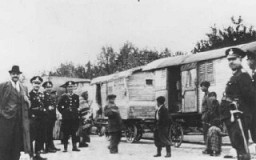
Onlookers watch during the resettlement of Romani (Gypsy) families from Vienna. Austria, September–December 1939.
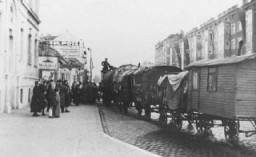
Forced-labor camp for Roma (Gypsies). Lety, Czechoslovakia, wartime.

Romani (Gypsy) women and children interned in the Rivesaltes transit camp. France, spring 1942.
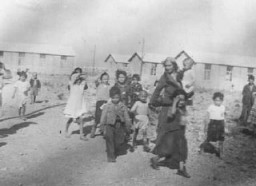
Serbs and Roma (Gypsies) who have been rounded up for deportation. This photograph shows them being marched to Kozare and Jasenovac, both Croatian concentration camps. Yugoslavia, July 1942.
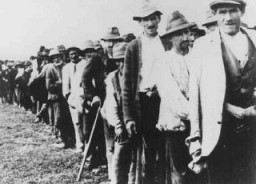
A Romani (Gypsy) victim of Nazi medical experiments to make seawater safe to drink. Dachau concentration camp, Germany, 1944.
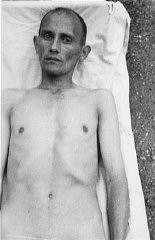
Romani (Gypsy) survivors in a barracks of the Bergen-Belsen concentration camp during liberation. Germany, after April 15, 1945.
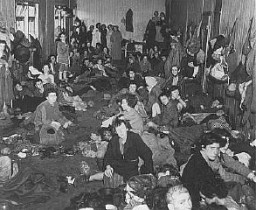
Buses that transported patients from the Eichberg hospital near Wiesbaden to the Hadamar euthanasia center, where the patients were gassed or killed by lethal injection. Germany, between May and September 1941.
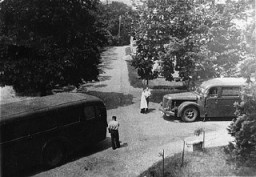
View of Bergen-Belsen concentration camp after the liberation of the camp. A row of small tents has been pitched outside the barracks. A group of survivors huddles in front of one of the tents.
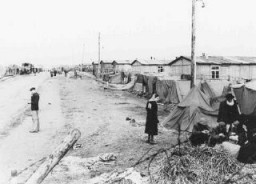
A view of the Bergen-Belsen concentration camp after the liberation of the camp. Bergen-Belsen, after April 15, 1945. The 63rd Anti-tank Regiment and the 11th Armoured Division arrived at the Bergen-Belsen concentration camp on April 15, 1945. When British troops entered the camp, they were totally unprepared for what they found. Inside were about 55,000 prisoners, many of whom were emaciated and ill and in desperate need of medical attention. Thousands of corpses in various stages of decomposition lay…
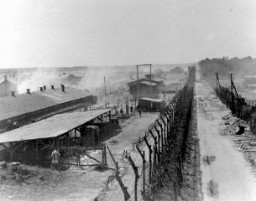
Crematorium oven used in the Bergen-Belsen concentration camp. Photograph taken after the liberation of teh camp. Bergen-Belsen, Germany, April 28, 1945.
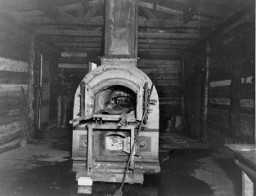
The remains of a crematorium at the Bergen-Belsen concentration camp. This photograph was taken after the liberation of the camp in 1945. Bergen-Belsen, Germany, date uncertain.

After camp liberation, one of the mass graves at the Bergen-Belsen camp. Germany, after April 15, 1945.
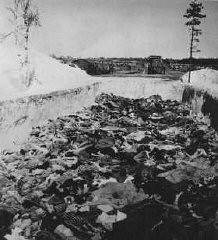
After liberation of the Bergen-Belsen camp, British soldiers forced German mayors from nearby towns to view mass graves. Bergen-Belsen, Germany, after April 15, 1945.
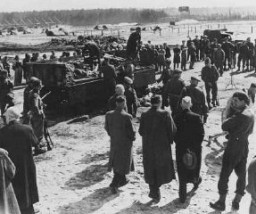
A British soldier watches women SS guards who were forced to carry victims' corpses to mass graves. Bergen-Belsen, Germany, after April 15, 1945.
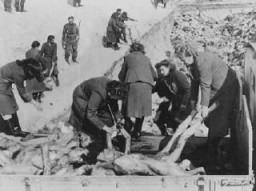
Two survivors in front of the women's barracks in the Bergen-Belsen concentration camp. Bergen-Belsen, Germany, April 1945. © IWM (BU 3740)
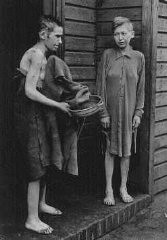
Soon after liberation, camp survivors bathe in outdoor showers set up by the British. Bergen-Belsen, Germany, after April 15, 1945.
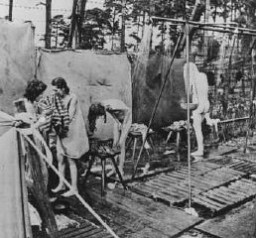
Soon after liberation, camp survivors eat near scattered corpses. Bergen-Belsen, Germany, after April 15, 1945.
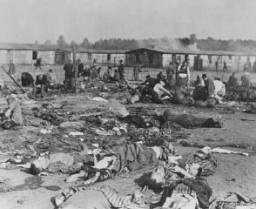
Buildings of the Bergen-Belsen concentration camp are burned to the ground by British soldiers to prevent the spread of typhus. Germany, May 21, 1945.
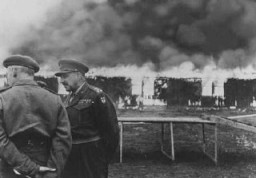
Buildings of the Bergen-Belsen concentration camp is burned to the ground to halt the spread of typhus. Germany, May 21, 1945.
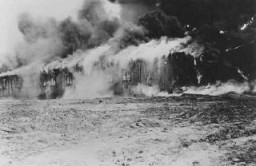
Passport issued to Gertrud Gerda Levy, who left Germany in August 1939 on a Children's Transport (Kindertransport) to Great Britain. Berlin, Germany, August 23, 1939.
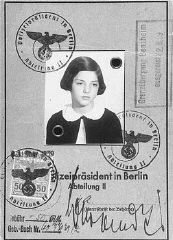
Circular label from the suitcase used by Margot Stern when she was sent on a Kindertransport to England. Germany, December 1938.
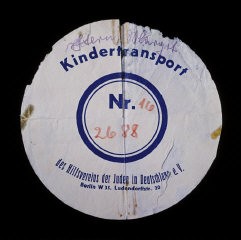
Jewish refugee children, part of a Children's Transport (Kindertransport) from Germany, soon after arriving in Harwich. Great Britain, December 2, 1938.
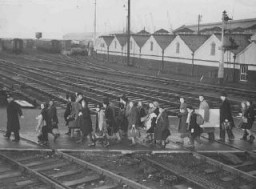
Jewish refugee children—part of a Children's Transport (Kindertransport)—from Vienna, Austria, arrive at Harwich. Great Britain, December 12, 1938.
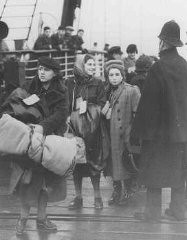
We would like to thank Crown Family Philanthropies, Abe and Ida Cooper Foundation, the Claims Conference, EVZ, and BMF for supporting the ongoing work to create content and resources for the Holocaust Encyclopedia. View the list of donor acknowledgement.